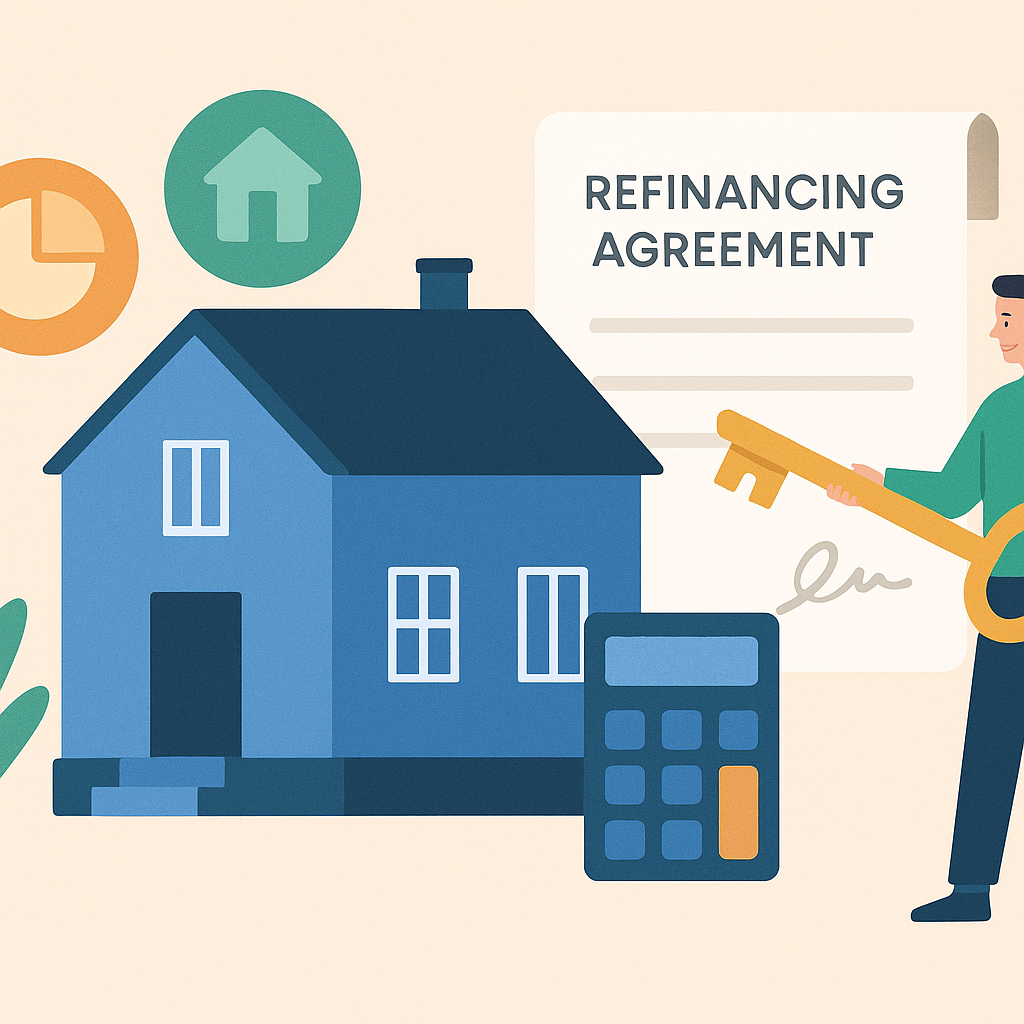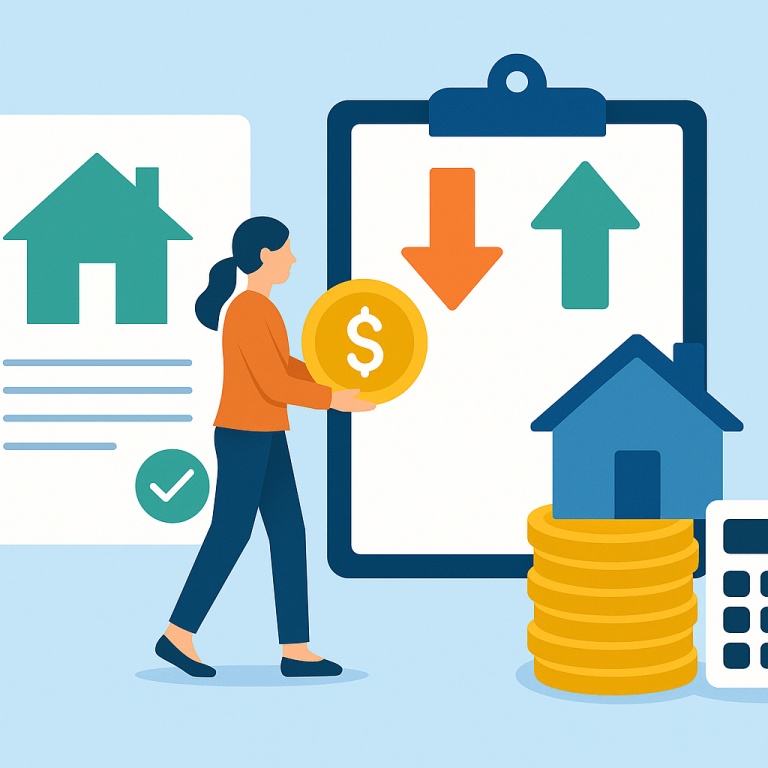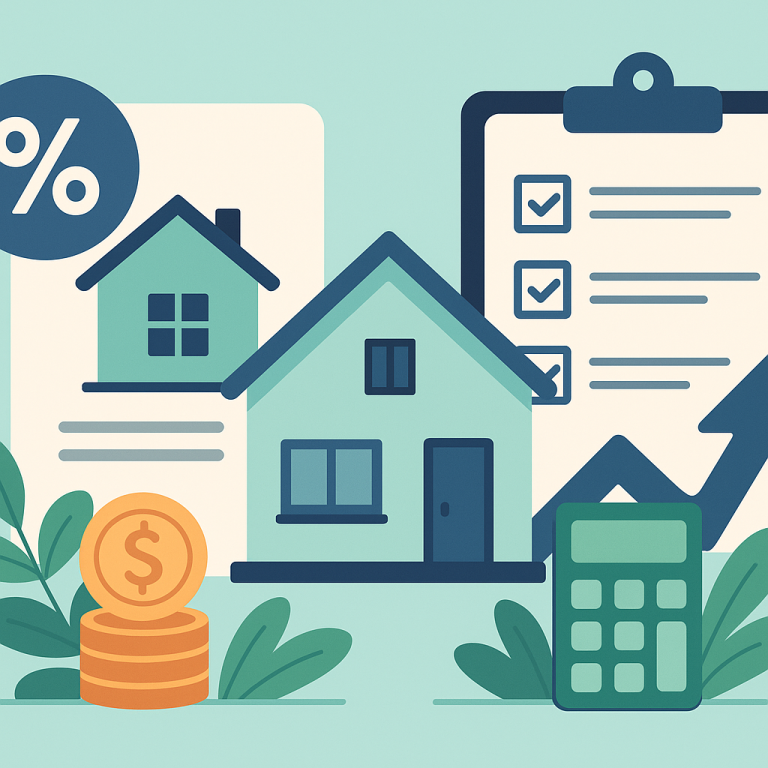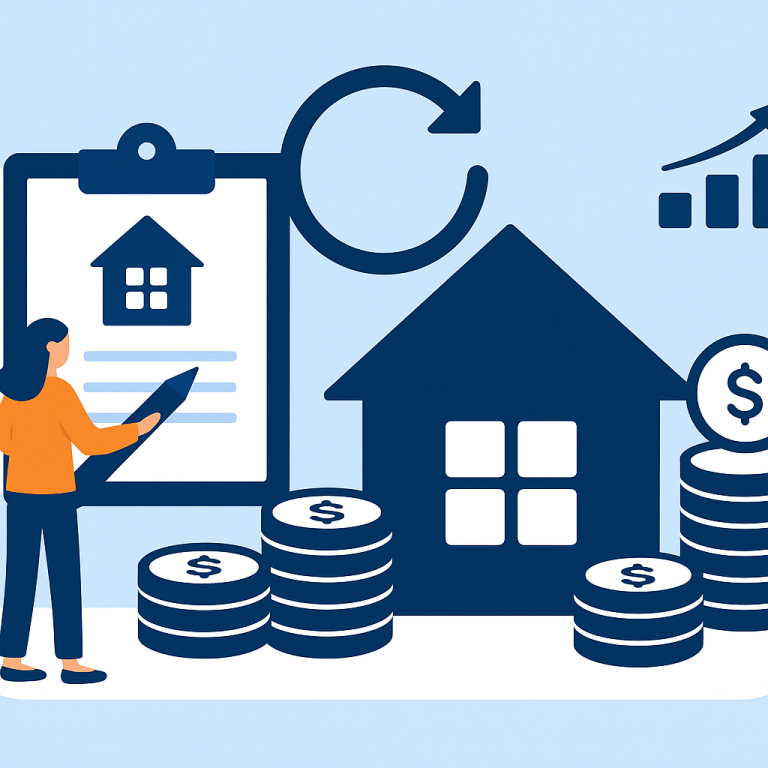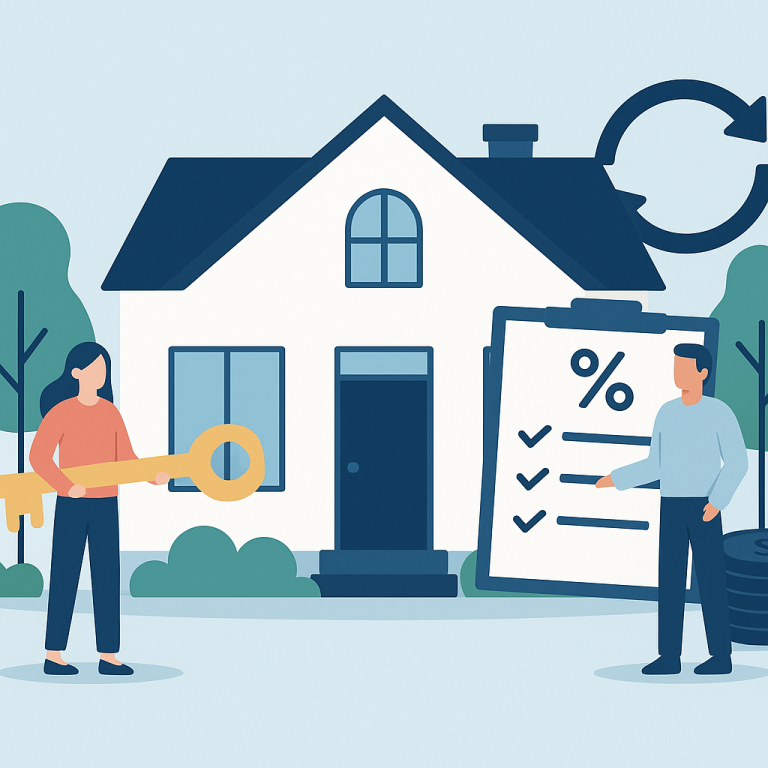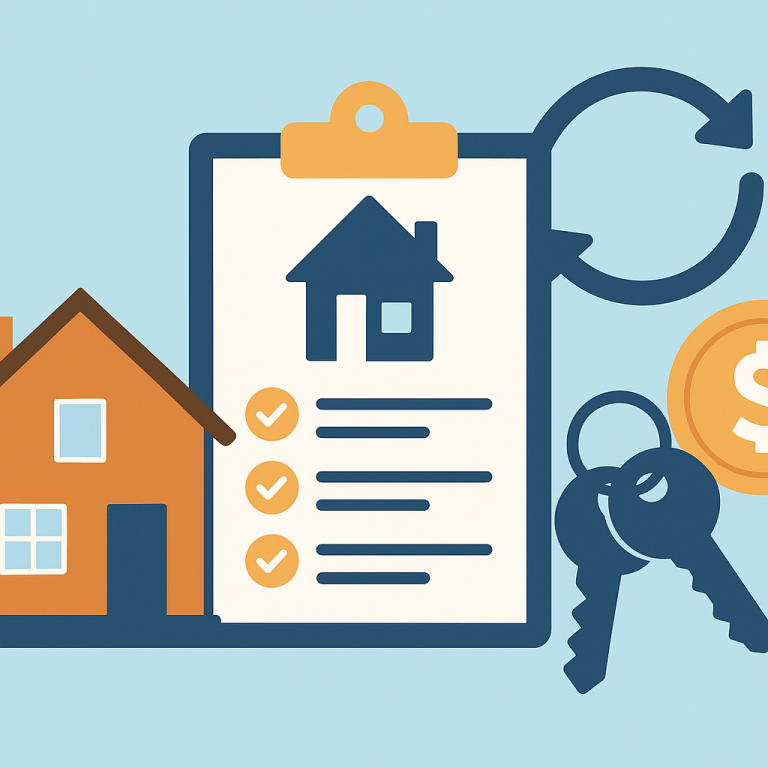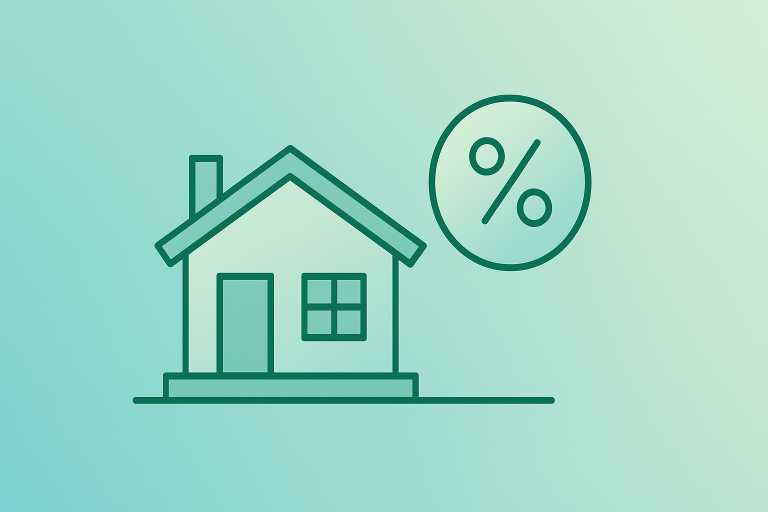Refinance guide interest-only loan refinance to amortizing
Refinancing an Interest-Only Loan to an Amortizing Mortgage: What It Is and When It Makes Sense
An interest-only loan lets you pay only the interest on your mortgage for an initial period (often 3–10 years), after which payments typically adjust to cover principal and interest. Refinancing to an amortizing mortgage replaces that structure with a loan that repays both principal and interest over a defined term, producing steady principal reduction and predictable payments.
This refinance makes sense when the interest-only period is ending and you want to avoid a sudden payment shock, when you want to build equity faster, when you can secure a better rate or a fixed payment, or when your financial situation has improved enough to afford higher monthly payments and shorten the repayment term.
Benefits and Drawbacks
Benefits
- Predictable payments: Amortizing loans create steady monthly payments (if fixed-rate) that cover both interest and principal.
- Equity building: Paying principal reduces your loan balance and increases home equity, improving net worth and refinancing options later.
- Lower long-term interest: Shorter amortization or paying principal reduces total interest paid across the life of the loan compared with repeated interest-only periods.
- Stability: Moving to a fixed-rate amortizing loan removes uncertainty tied to adjustable interest rates or a looming reset.
- Improved refinance/resale flexibility: Lenders and buyers typically prefer loans with principal reduction; it can simplify future refinancing or a sale.
Drawbacks
- Higher monthly payments: Adding principal to your payment can significantly increase your monthly outlay, especially if you refinance into a short term.
- Closing costs: Refinancing triggers fees and costs that can be several thousand dollars, reducing short-term savings.
- Possible higher rate for certain borrowers: If your credit or market rates aren’t favorable, you might not secure a lower rate despite switching to amortizing payments.
- Cash flow strain: If income is tight, the larger payment could stress finances or increase risk of missed payments.
Costs and Fees to Expect
Refinancing typically involves similar costs to an original mortgage. Common items include:
- Loan origination fee: A lender charge for processing the refinance (often 0.5–1.5% of loan amount).
- Appraisal fee: Lenders often require a property appraisal ($300–$700+ depending on location).
- Title insurance and search: Costs to verify title and issue insurance.
- Credit report, underwriting and processing fees: Usually a few hundred dollars total.
- Prepaid items: Escrows for property taxes and homeowners insurance, and any prepaid interest.
- Recording and transfer fees: Local fees to record the new mortgage.
- Prepayment penalty: Some interest-only loans have penalties for paying them off early—confirm your current note.
Overall closing costs commonly range from 2% to 5% of the loan balance, but can be lower or higher depending on lender, location, and loan specifics. Ask for a Loan Estimate to compare offers side-by-side.
Step-by-Step Refinance Process
- Clarify your goals: Decide whether you want a fixed payment, shorter term, lower rate, or to eliminate balloon/reset risk.
- Review your current loan: Check remaining interest-only period, any balloon payment, prepayment penalties, and current interest rate.
- Check your finances: Gather pay stubs, tax returns, bank statements, and check your credit score. Calculate debt-to-income (DTI) and available equity (current loan-to-value, LTV).
- Shop lenders: Request Loan Estimates from multiple lenders. Compare rates, APR, fees, and whether points are charged.
- Choose loan product: Decide on fixed vs adjustable rate, loan term (e.g., 15-, 20-, 30-year), and whether you’ll roll closing costs into the loan.
- Apply and lock rate: Submit an application and lock the rate if satisfied with terms.
- Appraisal and underwriting: Lender orders an appraisal; underwriter reviews all documentation and approves the loan.
- Closing: Review closing disclosure, sign documents, pay closing costs, and the new loan funds. Your prior mortgage is paid off and the new amortizing schedule begins.
Common Pitfalls to Avoid
- Underestimating the payment increase: Use amortization calculators to estimate the new monthly payment for different terms before committing.
- Ignoring prepayment penalties: Confirm whether paying off your interest-only loan triggers fees that offset refinancing benefits.
- Not shopping around: Small differences in rate or fees can change the break-even point markedly.
- Choosing a longer term to lower payments without considering total cost: Extending amortization can reduce the monthly payment but increase total interest paid over time.
- Failing to account for escrow changes: Property taxes and insurance may be collected differently, affecting monthly payment amounts.
- Skipping contingency funds: Higher payments or closing costs can strain reserves—don’t deplete emergency savings to refinance.
FAQ
Will my monthly payment always go up when I refinance from interest-only to amortizing?
Not always. If you secure a substantially lower interest rate or extend the loan term, your payment could stay similar or even drop. However, adding principal repayment typically increases the payment unless offset by a rate reduction or longer term.
Do I need an appraisal to refinance?
Most conventional refinances require an appraisal to establish current home value and LTV. Some streamlined programs or lender-specific products may offer appraisal waivers for qualified borrowers, but those are not guaranteed.
How long does the refinance process take?
From application to closing is typically 30–45 days, though it can be faster or slower depending on documentation, appraisal availability, and underwriting complexity.
Can I refinance to a shorter amortization to pay off my mortgage faster?
Yes. Switching to a 15- or 20-year amortization increases monthly payments but reduces total interest paid. Ensure you can comfortably afford the higher monthly amount before choosing a shorter term.
Refinancing an interest-only loan to an amortizing mortgage can protect you from payment shock, build equity, and provide long-term stability—if you carefully evaluate costs, shop wisely, and choose a repayment plan aligned with your budget and goals.
META: interest-only-to-amortizing-refinance-guide

